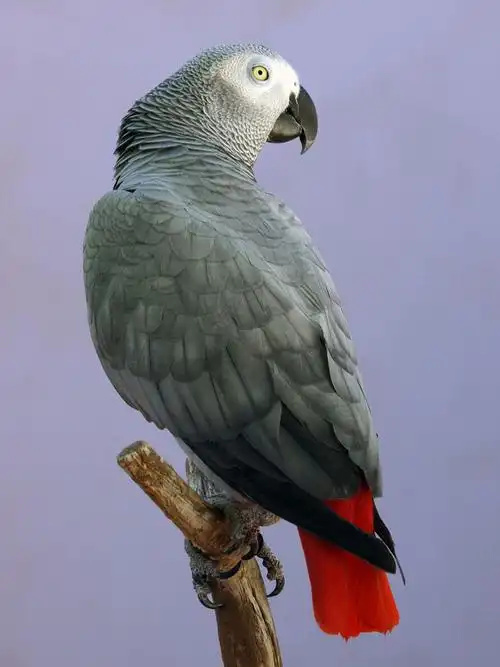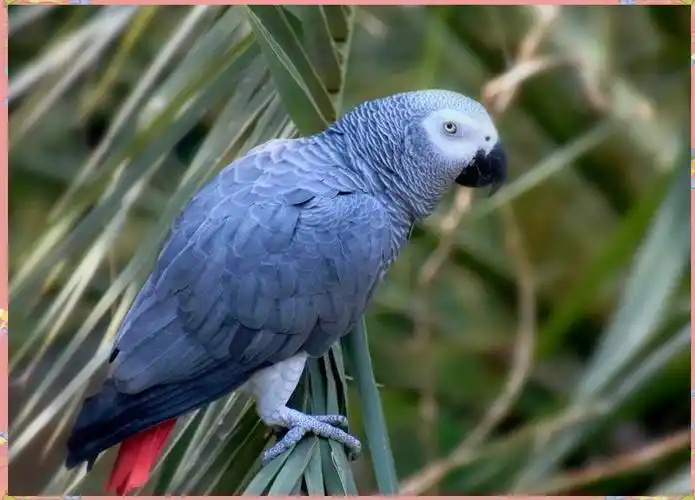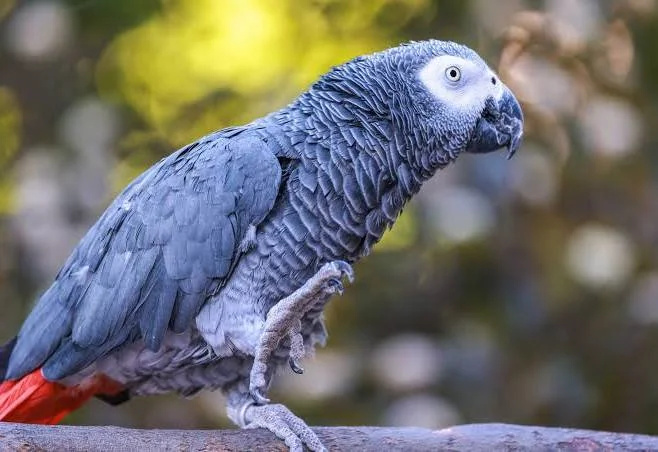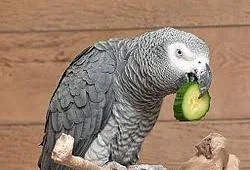
The Congo African Grey Parrot (Psittacus erithacus erithacus) is a highly intelligent, medium-sized parrot known for its remarkable talking and mimicry skills. Native to Central and West African rainforests, the Congo African Grey is the larger of the African Grey subspecies, with its iconic light grey feathers, bright red tail, and white facial mask.
Due to their advanced intelligence and emotional depth, Congo African Greys are admired by experienced parrot keepers but require a high level of commitment and care.
Congo African Grey Characteristics
Size: 12–14 inches (30–36 cm) in length.
Weight: 400–600 grams.
Lifespan: 40–60+ years with proper care.
Color: Light grey body, white mask, bright red tail feathers.
Temperament: Intelligent, sensitive, affectionate yet cautious.
Congo African Grey Pictures



Personality and Behavior
The Congo African Grey Parrot is often considered the best talking parrot species, capable of learning hundreds of words, phrases, and sounds with exceptional clarity.
They are social and form deep bonds with their owners, often becoming “one-person birds.” However, they can be shy, sensitive to household changes, and prone to stress, requiring a stable, enriching environment and consistent routines.
Without adequate mental stimulation, they may develop behavioral issues such as feather plucking or excessive screaming. Daily interaction, positive reinforcement training, and environmental enrichment are essential.
Diet and Feeding
Proper nutrition is crucial for maintaining your Congo African Grey’s health and longevity:
Pellets: High-quality pellets should form 60–70% of their diet.
Fresh vegetables: Leafy greens, carrots, bell peppers, sweet potatoes, broccoli.
Fruits (in moderation): Apples, berries, mango, papaya.
Calcium supplementation: African Greys are prone to calcium deficiencies; include cuttlebone and dark leafy greens.
Fresh, clean water daily.
Avoid avocado, chocolate, caffeine, alcohol, and foods high in fat, salt, or sugar.
Care Requirements
- Cage size: Minimum 36” x 24” x 48” with ¾ inch bar spacing; aviaries are ideal for exercise.
- Exercise: 3–5 hours of out-of-cage, supervised activity daily.
- Enrichment: Foraging toys, puzzle feeders, shredding toys, and regular training sessions to challenge their advanced intellect.
- Socialization: Daily human interaction to prevent loneliness and stress.
- Hygiene: Regular cage cleaning, water changes, and bathing opportunities.
- Veterinary care: Annual avian check-ups to monitor for nutritional and health concerns.
Common Health Problems
Congo African Grey Parrots may develop:
- Feather plucking: Often due to stress, boredom, or poor diet.
- Calcium deficiencies: Leading to weak bones and potential seizures.
- Psittacosis: A bacterial infection transmissible to humans.
- Respiratory infections: From drafts or poor air quality.
Regular monitoring of droppings, feather condition, appetite, and activity level is crucial for early detection of health issues.
Price and Where to Buy
- Price range: $1,500–$3,500 USD depending on breeder, hand-raising quality, and region.
- Where to buy:
- Ethical breeders with a focus on hand-raising and socialization.
- Avian specialty stores with clear health records and DNA sexing (optional).
- Parrot rescues and adoption centers for those looking to adopt.
Note: Congo African Greys are protected under CITES Appendix I, requiring paperwork and legal compliance in many regions.
Are Congo African Grey Parrots Good Pets?
Congo African Grey Parrots are exceptional companions for experienced owners ready to provide consistent social interaction, enrichment, and long-term commitment.
They excel at talking and learning complex behaviors.
Their sensitivity and emotional intelligence require stable households with owners who understand their advanced needs.
Conservation Note
The Congo African Grey is listed as Endangered due to habitat destruction and illegal capture for the pet trade. Always choose captive-bred parrots from ethical breeders or consider adopting from rescues to support conservation and responsible ownership.
